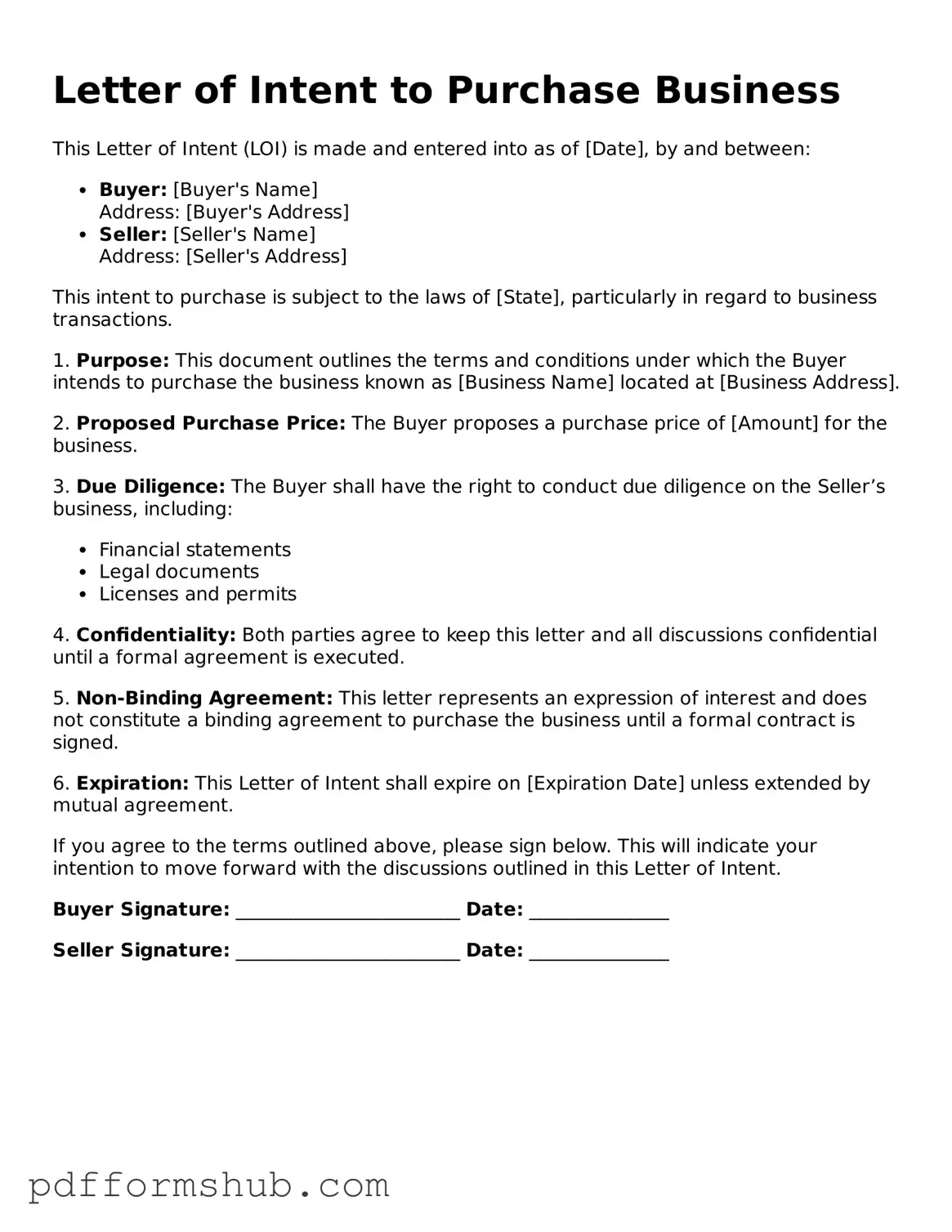Valid Letter of Intent to Purchase Business Form
A Letter of Intent to Purchase Business is a document that outlines the preliminary agreement between a buyer and a seller regarding the terms of a potential business acquisition. This form serves as a starting point for negotiations and helps clarify the intentions of both parties before moving forward with a formal purchase agreement. If you're ready to take the next step in your business journey, fill out the form by clicking the button below.
Customize Form
